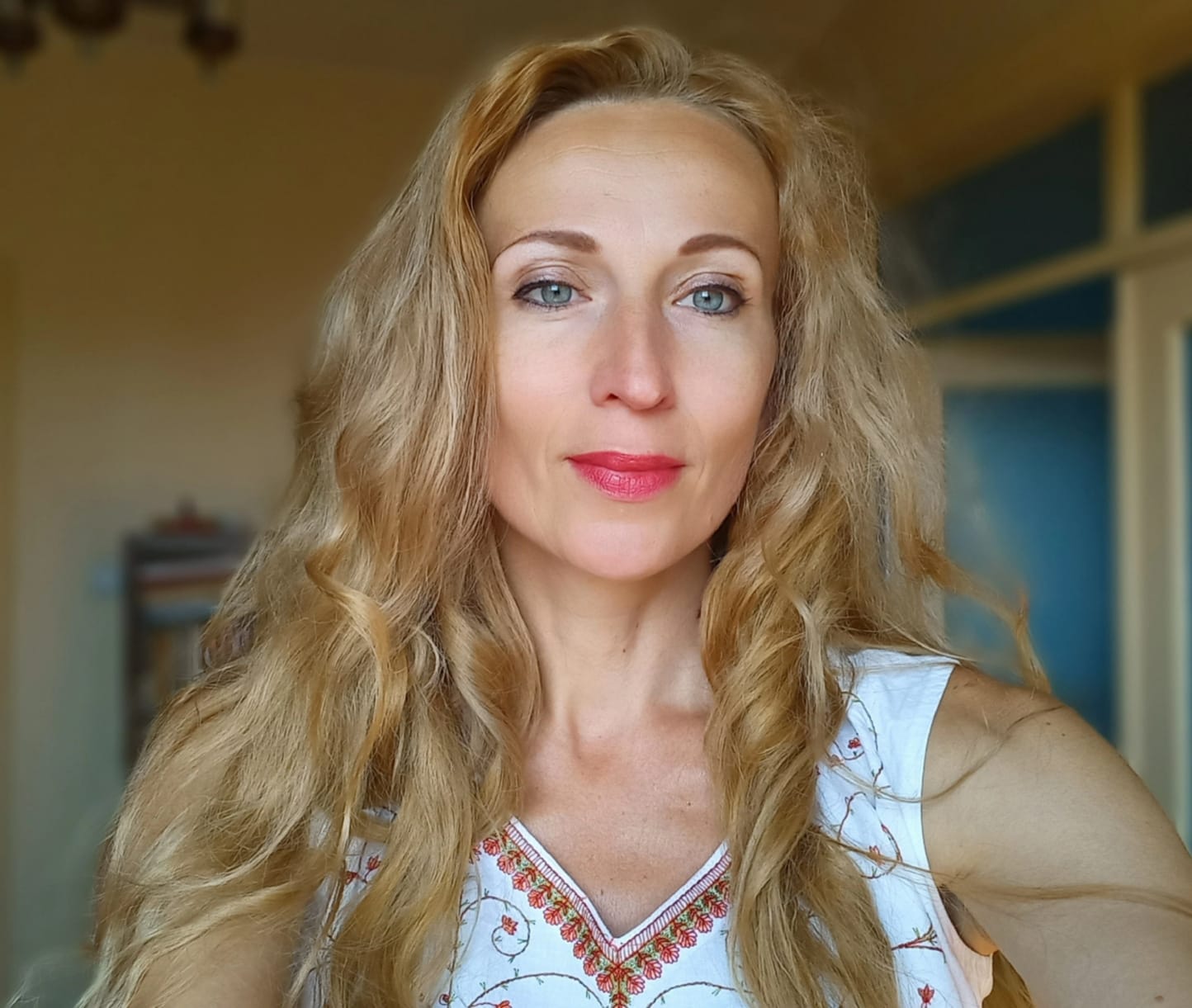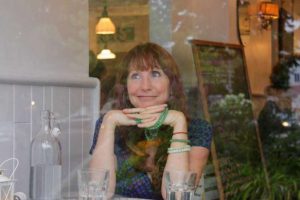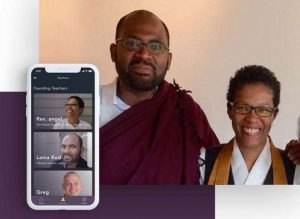
All phenomena come into being (Skt: samutpada; Tib: ’byung ba) through a dependent relationship with all other phenomena. This is how we explain the Buddhist concept of dependent origination (Skt: pratityasamutpada; Tib: rten ‘brel du ’bjung ba or, in short, tendrel), which expresses the dynamic between consciousness and reality that changes over time. We live in an era of digital technologies, which have a strong impact on our consciousness and on the reality in which we live—or the realities, multiple and parallel. Virtual reality creates totally different perceptions of time and space. Digital technologies can be used to create a magical connection between past, present, and future, applying the ancient Buddhist ideas of interdependence. The skillful methods (Skt: upaya; Tib: thabs) are changing with time but the driving force behind them reminds the same.
Virtual reality opens up the borders of time and space, so that we can travel back in history and find lost worlds. Imagine traveling to Buddhist monasteries on the remote Kalmyk steppe of the Russian Empire. Although the temples were destroyed during the Soviet period, the imprints (Skt: vasana; Tib: bag chags) are still preserved in the space, and the gates are open to enter and explore such temples. Actually, this can be a real experience, an example of “real” virtual travel for everyone who just searches the web for “The Khurul Project” and opens its website.
To reconstruct buildings that are no longer extant, to bring new life to sacred structures lost in dramatic times, to create an auspicious connection (tendrel) with young generations and inspire them to see their own history and heritage in a new light, these are some of the motifs and aspirations behind The Khurul Project, which brings together the rich past, present, and future of Kalmyk Buddhist history.

“To be able to go forward into the future, one still needs to acknowledge the past,” says the author of this project, Simon Daisley, in an interview with The Digital Orientalist online magazine, where he presents his project, recreating Kalmyk Buddhist monasteries (khuruls) with the help of digital technology.
Daisley is an independent scholar based in New Zealand and trained in the fields of history, religious studies, and museum and heritage studies. Currently, he works with community groups and organizations, including Buddhist groups, to preserve their heritage in a digital heritage repository. His main area of research is Tibetan-Mongolian Buddhism, with a particular focus on the history of Buddhism in the Russian Empire, especially among the Kalmyk people.
Some of Daisley’s academic research dedicated to the khuruls of Kalmykia includes the non-celibate Kalmyk Buddhist religious servitors of the Ural Cossack Host in the Russian Empire, the mandala-inspired temples found in the Buddhist khuruls of the Buzava (Don) Kalmyks in the Don Cossack Host of the Russian Empire, and the Bagatugtun Syume, a Kalmyk Buddhist temple in the former Russian Empire. His academic interest in the khuruls of Tsarist Russia,* combined with his passion to work with digital technology, has led him to examine ways of recreating some of the monasteries as digital models with the unique Khurul Project. The project gives a completely new perspective on exploring the lost treasures of Kalmyk Buddhist culture. Using the 3D design software SketchUp, Daisley has digitally modeled three Kalmyk monasteries: Bagatugtun Syume; Kebyun Shirya Orgo (Dundu Khurul); and Ike Burul Khurul, which can be accessed on The Khurul Project website. The site consists of 3D digital models of the former khurul buildings, interactive maps showing their locations, articles about their history and significance, and an explanation of the technology of his work.

I met Daisley in virtual space thanks to an auspicious connection (tendrel) with a common Kalmyk friend. I was fascinated by The Khurul Project and dove into his 3D models with curiosity and excitement. It was inspiring to enter the ancient historical temples, to look from their windows, and to see them from a bird’s point of view. Many questions came to mind during this virtual exploration, and I was able to discuss some of them with the author, who kindly agreed to share his thoughts with Buddhistdoor Global.
This is how he explained the main aspiration behind The Khurul Project: “The general purpose of my research is bringing the history of Kalmyk Buddhism to a wider, English-speaking audience, as most people I meet don’t even know that Buddhism exists in Russia or that it has a history reaching back to the imperial period.”
Daisley’s project contributes to our knowledge of Kalmyk Buddhism, which remains limited—especially in Western universities, which often present it as a subfield of Mongolian Buddhist studies. Furthermore, the project explores how the Gelug school of Tibetan Buddhism in general and Kalmyk Buddhism in particular has adapted to the political circumstances in the region.

“One theme that is found through my research is how the Gelug monastic system has adapted to the government restrictions of Imperial Russia,” Daisley explained. “This need to adapt gave the Buddhism of the Kalmyks unique features that made it different from other forms of the Gelug monastic system found in Tibet, Qing dynasty Mongolia, China, and so on. Many Western sources often simply state that the Buddhism of the Kalmyks had fallen away from its original traditions (in that there were no reincarnated lamas, etc.) I feel that this is just lazy, as it doesn’t take into account the pressures that the Tsarist government put on non-orthodox religious traditions. So I try to show that rather than simply being ignorant of their own religion, the Kalmyks were forced to adapt to government restrictions that were developed within an Orthodox Christian framework.”
Daisley’s insights about the forceful adaptation of Kalmyks to the restrictions of the Imperial Russian government deserves attention. This adaptation, as well as the absence of the tulku system in Kalmyk monastic Buddhism under the Tsars, are topics of his current research that has taken the shape of a book. Daisley is now in the process of searching out a publisher for his book, which will help further development of The Khurul Project.
Buddhistdoor Global wishes Daisley good luck with his project and hope that an auspicious connection with potential publisher will soon appear.
Simon Daisley would like to acknowledge that this work would not be possible without the support of Kalmyks from around the world. In particular, he would like to recognize Telo Tulku Rinpoche, Bem Mitruev, Ben Moschkin, Elta Sangadzhiev, and Kema Badmaeva.
* Russia was ruled by the tsars from 1547–1917. Tsar was a title given to the emperors of Russia before the Russian revolutions of 1917. The tsars held absolute power, but in practice were limited by the traditional authority of the Orthodox Church and other political factors.
See more
The Khurul Project
Reconstructing Kalmyk Buddhist Monasteries through Digital Modeling: An Interview with Simon Daisley from the Khurul Project (Digital Orientalist)
Related features from BDG
Buddhism in Kalmykia: Construction of a Stupa as a Symbol of Unity
A Kalmyk Village Through Time: Buddhist Lore and History in Tsagan Aman
The Kalmyk Temple of Victory: Survival of Buddhism on the Volga
Buddhist Holy Sites of the Russian Steppes












